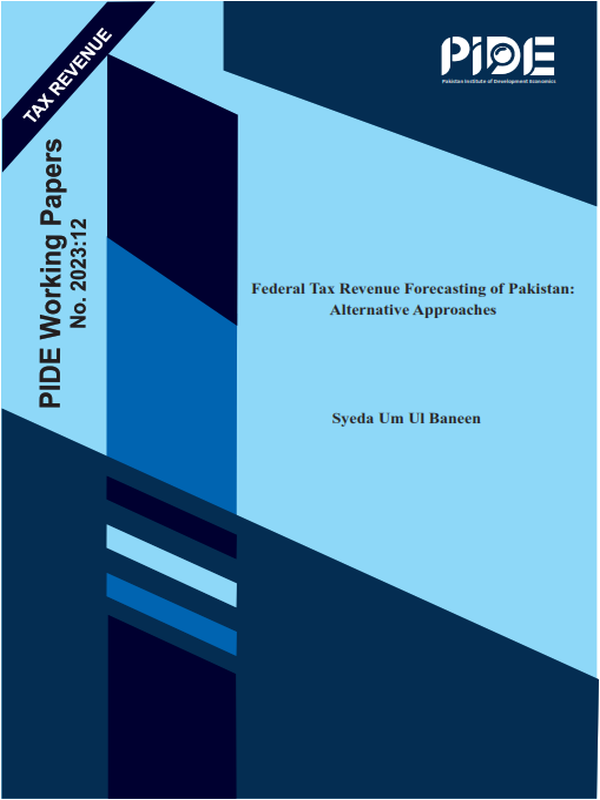
Pakistan Institute of Development Economics
- Home
Our Portals
MenuMenuMenuMenuMenuMenuMenu - ResearchMenuMenuMenuMenuMenuMenuMenu
- Discourse
- The PDR
- Our Researchers
- Academics
- Degree Verification
- Thesis Portal
- Our Portals
Federal Tax Revenue Forecasting of Pakistan: Alternative Approaches
1. INTRODUCTION
Every year, there are forecasting errors in Pakistan’s federal tax revenues. From 1970 to 2020, the federal government has significant forecast errors for all types of tax revenues. Using 1970-2014 data, two-thirds of the time, total federal taxes were overestimated by more than five percent (Qasim & Khalid, 2016). Errors in tax revenue forecasts directly affect budget formulation. The consequences of such errors are misleading tax revenue targets leading to wrong allocation of resources resulting in arbitrary cuts at the end of fiscal year such as a cut in development expenditures and/or an increase in the unanticipated debt burden. This, from policy perspectives, have long-run monetary and fiscal effects.
In Pakistan, the Federal Board of Revenue (FBR) is responsible for revenue collection at the federal government level. FBR produces annual forecasts of its tax streams before the budget formulation so that the expenditures can be planned at the federal government and through resource sharing (National Finance Commission-NFC) the provincial governments. Once the expenditures are set the deficits are estimated and financing options such as Bank borrowing are set. FBR uses the Buoyancy approach to forecast tax revenues(FBR, 2021). In this approach, we estimate the parameter by calculating the proportionate change in tax revenue with respect to the proportional change in the tax base. The estimates are then multiplied by nominal GDP growth targets for predicting the future estimates of tax revenues.
As reported earlier, forecasting errors were mainly on the higher side, resulting in fiscal mismanagement. A revenue prediction error results in over/underbooking of government expenditures, which, if called back, can result in wastage or under provisioning. If not adjusted, it would result in extra financing, thus putting pressure on the monetary side as well. Further, given Pakistan’s federating nature, any revenue prediction error would also carry over to the provinces through the revenue -sharing channel. A possible reason for these repeated errors could be using an inappropriate forecasting method over the years. Several alternative forecasting methods are available for better prediction of revenue streams. This study estimates some alternatives to buoyancy approach for federal tax revenue forecasts. These methods have been compared to suggest the most accurate predicting method for each federal tax head.
The paper provides literature review on the alternative methods efficacy, followed by methodology and data description. Then results are provided based on alternative methods estimations, and the conclusion is drawn at the end of the paper.



